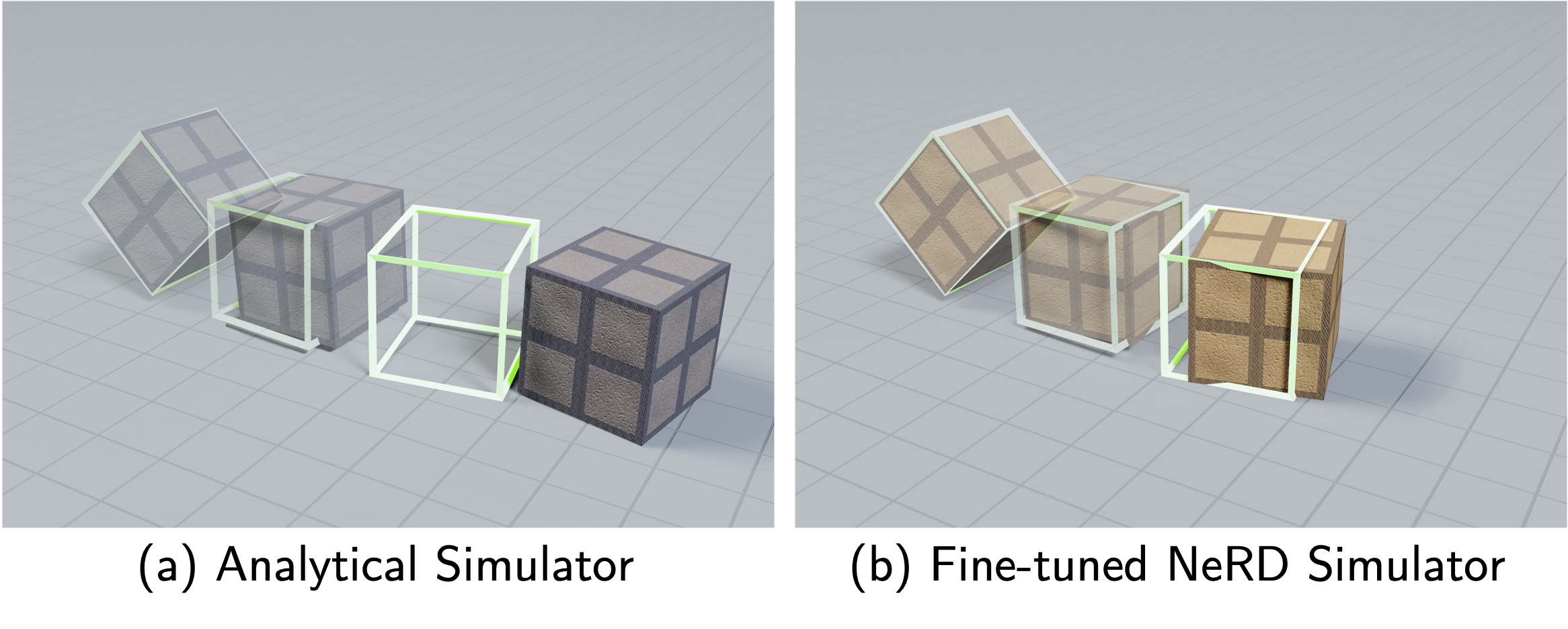
Accurate and efficient simulation of modern robots remains challenging due to their high degrees of freedom and intricate mechanisms. Neural simulators have emerged as a promising alternative to traditional analytical simulators, capable of efficiently predicting complex dynamics and adapting to real-world data; however, existing neural simulators typically require application-specific training and fail to generalize to novel tasks and/or environments, primarily due to inadequate representations of the global state. In this work, we address the problem of learning generalizable neural simulators for robots that are structured as articulated rigid bodies. We propose NeRD (Neural Robot Dynamics), learned robot-specific dynamics models for predicting future states for articulated rigid bodies under contact constraints. NeRD uniquely replaces the low-level dynamics and contact solvers in an analytical simulator and employs a robot-centric and spatially-invariant simulation state representation. We integrate the learned NeRD models as an interchangeable backend solver within a state-of-the-art robotics simulator. We conduct extensive experiments to show that the NeRD simulators are stable and accurate over a thousand simulation steps; generalize across tasks and environment configurations; enable policy learning exclusively in a neural engine; and, unlike most classical simulators, can be fine-tuned from real-world data to bridge the gap between simulation and reality.
NeRD is characterized by two key innovations: (1) hybrid prediction framework (subfigures (a)(b)), where a neural network model uniquely replaces only the application-agnostic simulation modules in a conventional simulator, i.e., the low-level forward dynamics and contact solvers (subfigures (a)(b)), for the generalization across tasks and environments; (2) robot-centric state representation (subfigure (c)), to ensure generalizability on robot’s spatial locations.

Framework overview for Neural Robot Dynamics (NeRD). (a) Workflow of a classical robotics simulator. The quantities shaded in green are application-agnostic. (b) Hybrid prediction framework of the NeRD-integrated simulator. Inputs to NeRD are the robot-centric state representations (illustrated in (c)) within a history window.
A single NeRD model for double pendulum genearlizes across various contact configurations
(blue rollouts are simulated by ground-truth simulator, orange rollouts are simulated by NeRD)
Contact Free
Ground Configuration 1
Ground Configuration 2
Ground Configuration 3
Ground Configuration 4
Ground Configuration 5
Ground Configuration 6
Robot policies can be learned exclusively in the NeRD-integrated neural simulator.
The executions of those learned policies exhibit high matching between the NeRD-integrated simulator and the ground-truth analytical simulator.
(Each robot instance shares a single NeRD model)
ANYmal Forward Walking
ANYmal Sideways Walking
Franka Reach
Cartpole Swing Up
Ant Running
Ant Spinning
Ant Spin Tracking
The Franka reach policy learned in the NeRD-integrated neural simulator can be zero-shot deployed in real
The NeRD models pre-trained from simulators can be fine-tuned from real data to capture real-world dynamics.

@inproceedings{
xu2025neural,
title={Neural Robot Dynamics},
author={Jie Xu and Eric Heiden and Iretiayo Akinola and Dieter Fox and Miles Macklin and Yashraj Narang},
booktitle={9th Annual Conference on Robot Learning},
year={2025}
}